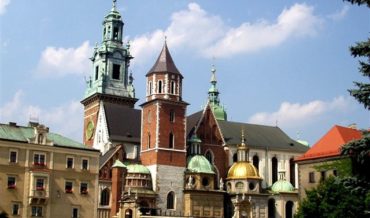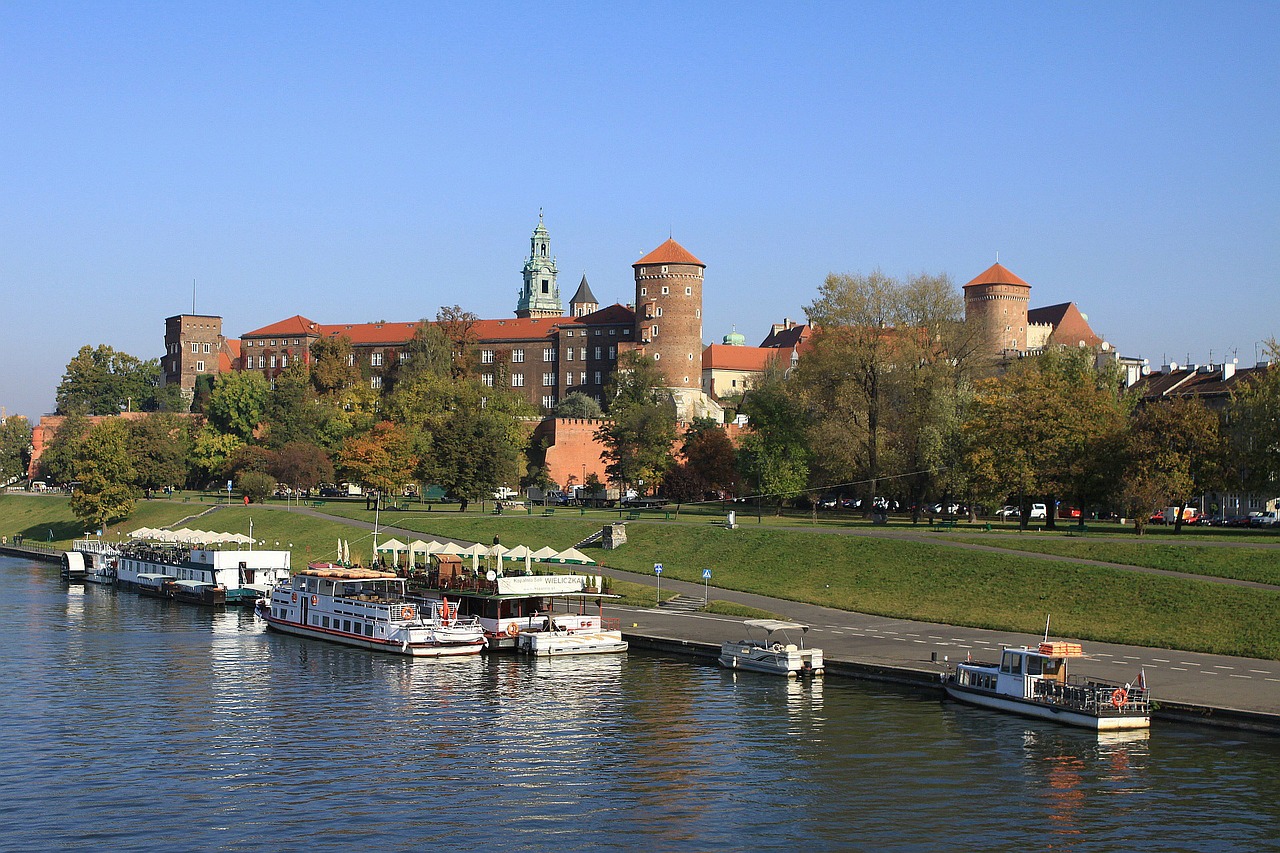Contents
Key Facts
• French noble family that arrived in Poland with Queen Marie Casimire Louise de La Grange d'Arquien (Marysieńka Sobieska)
• Received Polish indigenate in 1726, officially becoming Polish nobility through legal integration
• Elevated to baronial status during the Saxon period (1697-1763) under Augustus II and Augustus III
• Family name variations include both Puget and Puchet in historical documents, reflecting linguistic adaptation
• Historic palace location at 11-15 Starowiślna Street in Kraków's Old Town district
• Exemplifies foreign noble integration into Polish-Lithuanian Commonwealth's unique political system
Historical Origins and Arrival in Poland
The Puget family (also documented as Puchetowie) represents a compelling case study in French noble migration to the Polish-Lithuanian Commonwealth during the transformative late 17th century. This distinguished family arrived as part of the entourage of Queen Marie Casimire Louise de La Grange d'Arquien (Marysieńka Sobieska), the French-born consort of King Jan III Sobieski, following the royal marriage in 1665.
Their migration occurred during a period of unprecedented cultural exchange, when the Commonwealth actively welcomed foreign expertise to strengthen its position in European politics. The timing of their arrival, coinciding with Sobieski's military campaigns and diplomatic initiatives, suggests the Pugets possessed valuable skills—whether in administration, military affairs, or court protocol—that made them desirable additions to the Polish court.
This pattern of noble migration through royal marriages was not unique to Poland; however, the Commonwealth's distinctive political system, based on noble democracy (Golden Liberty), offered foreign families unprecedented opportunities for political participation once legal integration was achieved. These noble traditions would later be exemplified by figures like Polish royal traditions that shaped the Kingdom's cultural landscape.
Legal Status and Nobility Recognition
The Strategic Indigenate of 1726
The indigenate granted in 1726 represents more than bureaucratic procedure—it was a strategic integration into the Commonwealth's unique noble democracy. This occurred during the reign of Augustus II the Strong, when the Saxon court actively pursued policies to stabilize and strengthen the Commonwealth through selective foreign noble integration.
The indigenate provided the Puget family with:
- Full szlachta privileges including participation in regional assemblies (sejmiks)
- Unrestricted property ownership rights previously reserved for native Polish nobility
- Electoral privileges in the Commonwealth's unique royal election system
- Access to Crown offices and administrative positions within the state hierarchy
The timing suggests the family had spent nearly six decades demonstrating loyalty and value to successive Polish monarchs, building the trust necessary for such comprehensive legal integration.
Baronial Elevation During Saxon Rule
The family's elevation to baronial status during the Saxon period represents the culmination of successful cultural and political integration. This advancement occurred within the context of the Commonwealth's complex relationship with its Saxon monarchs, who sought to balance foreign influences with traditional Polish noble prerogatives.
This elevation reflected several key factors:
- Demonstrated loyalty through multiple generations of service
- Strategic alliances with established Polish noble houses
- Economic contributions to local and regional development
- Cultural mediation between French sophistication and Polish traditions
Family Documentation and Linguistic Adaptation
The dual nomenclature—Puget and Puchet—visible across historical records offers fascinating insights into 18th-century noble documentation practices. This wasn't merely regional dialect variation; it likely reflected deliberate adaptation to Polish phonetic conventions and administrative requirements.
Contemporary paleographic analysis reveals that such variations often indicated:
- Official court records versus family correspondence preferences
- Latin administrative forms versus vernacular usage
- Generational linguistic evolution as families integrated culturally
- Strategic identity flexibility in different social contexts
This linguistic fluidity demonstrates the family's sophisticated understanding of cultural navigation within the Commonwealth's multilingual aristocratic environment, where Latin, Polish, French, and German all played roles in noble communication.
The Puget Palace: Architectural Testament
Urban Integration in Historic Kraków
The Puget Palace at 11-15 Starowiślna Street stands as physical evidence of the family's successful integration into Kraków's aristocratic landscape. This location, within the prestigious Old Town district, was no accident—it placed the family at the heart of the Commonwealth's intellectual and cultural life, near the Jagiellonian University and major ecclesiastical institutions. The palace became one of many aristocratic palaces that defined Kraków's noble architectural heritage.
The palace's construction and maintenance required significant capital investment, demonstrating the family's economic success and long-term commitment to Polish society. The architectural choices likely reflected a sophisticated blend of French aesthetic sensibilities with Polish functional requirements, creating a unique synthesis representative of the period's cosmopolitan character.
Cultural and Social Significance
Starowiślna Street's historical importance as a major thoroughfare connecting Old Town districts meant the Puget residence served multiple functions, positioned strategically within the University Quarter and near the vibrant commercial center of Main Square:
- Social hub for French émigrés and Francophile Polish nobles
- Cultural salon introducing French intellectual and artistic trends
- Economic center facilitating trade connections with Western Europe, potentially including activities near the historic Cloth Hall
- Diplomatic space for informal international communication
The palace thus functioned as more than a private residence—it became an institutional bridge between French and Polish cultures during a crucial period of European political realignment. Its position along what would become part of the ceremonial Royal Road emphasized the family's integration into Kraków's most prestigious urban landscape.
Historical Impact and Integration Success
Political and Administrative Contributions
The Pugetowie family's story illuminates the Commonwealth's remarkable capacity for political integration of foreign elements while maintaining its distinctive character. Their success demonstrates how the szlachta democracy, despite its exclusivity, could effectively incorporate valuable foreign expertise when strategic necessity demanded.
Their integration success can be measured through several indicators:
- Sustained political participation across multiple generations
- Marriage alliances with established Polish noble houses
- Property accumulation indicating economic integration
- Cultural patronage supporting both French and Polish traditions
Broader Historical Context
The family's experience reflects the Commonwealth's complex relationship with Western European culture during the Saxon period. While maintaining Polish political traditions, the nobility simultaneously embraced cultural sophistication from France, the acknowledged center of European refinement.
This cultural synthesis contributed to what historians recognize as the Polish Enlightenment's distinctive character—maintaining Sarmatian political values while incorporating cosmopolitan intellectual perspectives. The Pugets represented this synthesis in microcosm, embodying both French cultural sophistication and genuine commitment to Polish constitutional traditions within the broader Małopolska region.
Legacy in Commonwealth History
The Pugetowie family exemplifies successful multicultural integration within the Polish-Lithuanian Commonwealth's unique political framework. Their story demonstrates that foreign noble integration, when properly managed through legal channels and cultural adaptation, could strengthen rather than dilute Polish noble society. Today, their historical significance can be studied through collections at institutions like the Historical Museum of Kraków and the National Museum, making them part of the broader narrative of notable Polish figures.
Their legacy encompasses:
Institutional Innovation
- Precedent-setting indigenate process for subsequent foreign noble integration
- Cultural bridge-building between French and Polish aristocratic traditions
- Economic development through foreign capital investment and expertise
Cultural Synthesis
- Architectural influence visible in palace construction and urban development
- Social customs blending French refinement with Polish hospitality
- Intellectual exchange facilitating Enlightenment ideas' adaptation to Polish contexts
The Pugetowie thus represent a successful chapter in the Commonwealth's centuries-long experiment in noble democracy and cultural integration, demonstrating how foreign expertise could be successfully incorporated while preserving essential Polish political and cultural characteristics. Their story offers valuable insights into the mechanisms that allowed the Commonwealth to maintain its distinctive character while remaining open to beneficial foreign influences. Visitors can still walk through the Planty gardens that encircle the Old Town where the family once lived, connecting past and present in Kraków's enduring landscape.

